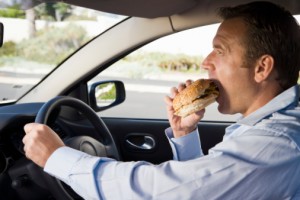Lose Weight > Common Sense To Lose Weight > Obesity > Is Your Child On The Road to Obesity? 4 Mistakes You Can Fix Now
Is Your Child On The Road to Obesity? 4 Mistakes You Can Fix Now
In reality we can all agree that having excess body fat would work to your advantage if you lived in Siberia. Why? Because there, you have to work for your food, brave the cold and brutal weather conditions just to survive. Today in America you almost don't have to work to do anything. With the advent of remote control entertainment systems, pizza delivery and wireless telephones, the average American never has to leave the sofa.
This becomes even clearer when we witness the growing problem of children with obesity. Nutrition counselors agree that for every 3 to 5 pounds a child is over their normal weight level before they reach puberty, that child will become on average 15 to 30 pounds before they reach the age of thirty. To add to this, Type II diabetes is now become one of the fastest growing diseases among teens.
This is troubling because young people are most impressionable during their teenage years. Think about it, going through puberty was hard enough when you were approaching puberty at a normal weight. Just imagine how difficult it must be for kids these days that now carry an additional 45 to 70 pounds around. What is really startling is the enormous growth taking place within the dieting industry. Teens are quickly become the best potential customer bases before they are able to vote.
Fortunately, this can be prevented. And it can be prevented easily and early on, and the solution is surprisingly retro:
Remember when you were a kid? You know, before video games like the Nintendo Wii. You actually had friends who played outside with you. You had energy and used it.
When you were thirsty, mostly you grabbed milk, sometimes orange juice, not sodas. Cookies were a treat, not a staple of your diet. Snacks were things like apple wedges or an orange, maybe some peeled carrots.
While the fast food outlets might not want you to know this, many parents are successfully teaching their kids to make healthy eating decisions. Today however, water too many of our youth is like the library, they've heard about it but never fully experienced it. Listen up parents. Sodas, juices or energy drinks are not a substitute for water. When properly hydrated, hunger pangs were shown to decrease significantly compared to those individuals who consumed no water.
As for snacks, limit their intake of high sugar and high fattening foods and increase their consumption of fruits and vegetables. This may not be as hard as you think. Consider this, if you kids are not of driving age and do not have a job, the only reason they are eating the way they are is because you as the parent purchase the unhealthy food in your kitchen. Trust me, if you don't buy it, they will immediately decrease their over consumption. Oh yeah, they'll complain however it is up to you to be the parent.
Also, make it a habit to make your time after meals an active one. Rather than eating a big meal and head up stairs to sleep, why not take the family for a nice walk in the park or around the block. You'll have time to connect, the children will release a lot of their built up energy and they will learn that an active lifestyle is part of a healthy routine. Not only will you feel better, you'll also connect with your kids.
The key to providing life long health for your kids is inculcating these habits early in life, so they become habits. Explain why you're doing it when they ask, but don't preach. Your kids will adopt the behaviors they see you doing - you're their parent, their role model, and these are the habits they'll stick with as they get older.
Related Articles
-
Kids Obesity: Involves Many Different Elements
Weight, calories and exercise are the pressing issues that face every
-
Cosmetic Surgery – Recovering from Considerable Weight Loss
-
Law-calorie Snacks
-
Weight Loss: It’s Not Always What You Eat, But What You Don’t Eat
-
Simple Tips For Losing Weight
-
Weight Loss Without Dieting
- DON'T MISS
- Healthy Ways To Lose Weight And Keep It Off
- Can Hoodia Help You Lose Weight ?
- Myth: Gastric Bypass Patients Can Never Be Nutritionally Healthy
- Finding the RIGHT Diet Pill
- Frankie The French Fry Hatches A Plan
- Picking a Doctor for Gastric Bypass Surgery
- Get That Diet Monkey Off Your Back!
- How The Motto “Be Prepared” Can Help You Lose Weight
- Here Comes The (Skinny) Bride
- Ghost of Binge Past




